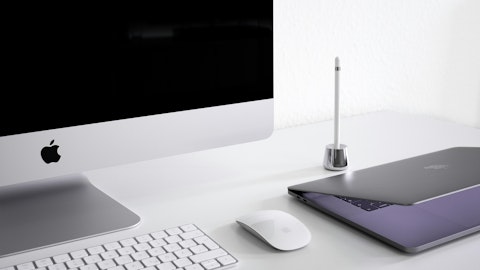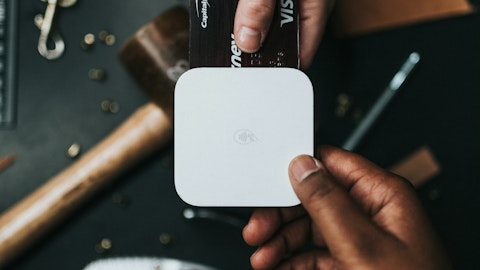With time, smart investors have become more interested in and familiar with forex trading. But an increasing number of inexperienced traders are looking at it as more people search for ways to augment their income while working from home or in their spare time.
For this reason, forex trading is very popular among beginners. Regretfully, the majority of people are unaware of the subtleties, while some take big chances in the hopes of making big profits quickly.

Image by drobotdean on Freepik
What is Forex Trading and How Does Forex Trading Operate
Buying and selling currencies in pairs, such as EUR/USD, GBP/USD, USD/JPY, etc., is known as forex trading. The rates at which you may buy and sell the base currency (the first currency in the pair) against the quote currency (the second currency in the pair) are represented by the bid and ask prices for each currency pair. The spread, which is the cost the forex broker charges for each deal, is the difference between the ask and bid prices.
Forex trading involves trading on changes in exchange rates, which are impacted by a number of variables, including supply and demand, interest rates, inflation, and events in the economy, politics, and society. For instance, you may purchase EUR/USD at a discount and sell it at a premium later on, to benefit from the difference if you believe that the euro will strengthen vs the US dollar. On the other hand, you may benefit from the difference if you believe that the value of the euro will decline relative to the US dollar. You can do this by selling it at a premium and then purchasing it again at a lower price.
Fundamental Strategies for Trading Forex
Long and short transactions are the most fundamental types of forex trading, with price fluctuations expressed in pips, points, and ticks. A trader who enters a long transaction is speculating that the price of the currency will rise and that they will be able to benefit from it. A short trade is a wager that the price of the currency pair will fall. To improve their trading methodology, traders may also use technical analysis-based trading tactics like moving averages and breakouts.
Trading methods may be further divided into four categories based on the timeframe and quantity of trades:
1. A scalp trade limits the number of pip profits and consists of cumulative positions maintained for a maximum of seconds or minutes.
2. Short-term transactions known as “day trades” include holding and closing positions on the same day. A day trade may last for minutes or hours.
3. A swing trader keeps the position for many days or weeks, rather than just one day.
4. A position trader keeps the currency for a considerable amount of time—months or even years—after making the deal.
Start Trading Forex
Getting started with forex trading as a beginner can seem daunting, but breaking the process down into simple steps makes it approachable. Follow this guide to understand the basics and launch your forex trading career.
Choose a Broker
The first step is choosing an online broker to provide you with a trading platform. When picking the best broker for your needs, consider factors like regulation, trading tools, asset options, commissions and spreads, educational resources, and customer support.
Popular forex brokers include:
- Oanda
- com
- IG
- Saxo Bank
- CMC Markets
Opening a demo account first can help you test broker platforms and gain experience risk-free.
Learn Forex Basics
Before depositing real money, get educated on key forex principles to form trading strategies. Study basic concepts like:
1. Currency pairs. The exchange rate between the two currencies is EUR/USD. Major crosses and exotics have different characteristics.
2. Pip sizes and lots of them. A pip is the amount of change for a pair of currencies. Set amounts of currency are represented by standard and microlots.
3. Bid/ask spread. The small difference between the buying and selling price set by your broker.
4. Leverage and margin. A 30:1 leverage ratio allows higher exposure with a smaller capital deposit. Margin requirements must be maintained.
Solid fundamental and technical analysis skills are vital, too. When evaluating trades, focus on understanding support, resistance, trends, volatility, volume, risk management, and more.
Develop a Trading Plan
An organized trading plan prevents emotional decisions and keeps your trades aligned with clear goals. Outline details like:
1. Markets and timeframes. Will you trade majors on the 1-hour chart or crosses on the daily?
2. Risk tolerance and position sizing. What percentage of capital will you risk per trade? Will you use micro, mini or standard lots?
3. Entry/exit methods. Do you use breakouts, pullbacks or other distinct strategies to enter and exit positions?
4. Risk management rules. Where will you place stops? When will you cut losses? What is your reward: risk ratio?
Stick to your trading plan consistently to ingrain good habits. Review and update the plan as you gain experience.
Start Small with a Demo Account
When first moving to live trading, begin trading micro lots with a demo account to keep the risk small while practicing real market execution. Set aside dedicated learning time each day. Focus on steadily honing your technical skills through demo trading before increasing position sizes or depositing more funds.
Key areas to master in a demo:
- executing trades quickly when opportunities arise;
- managing open positions by moving stops to lock in profits;
- sticking strictly to your risk management rules;
- controlling emotion to make logical decisions under pressure.
Only when consistently profitable on a demo account should you graduate to a small live account.
Open a Live Account
Once demonstrating consistent simulated trading success, open a small live trading account to start putting real money on the line.
When opening your first real account:
1. Start very small, such as 500 − 500−2,000 or less.
2. Use minimum trade sizes of 0.01 lots.
3. Set aside dedicated practice time 4-5 days per week.
4. Trade only 1-2 currency pairs you know extremely well.
The psychological difference between demo and live accounts is significant. By keeping the live account small, you can adjust to real financial risk with less account volatility.
Create a Trading Journal
A trading journal tracks all market activity, plans, and personal reflections. It helps identify mistakes for improvement and successful patterns for repetition. Log details like:
- pre-market analysis and plans;
- trade details like entry price, exit price, size, etc.;
- emotional state at the times of trade;
- post-market review of trades and performance.
Studying your journal highlights strengths to leverage and weaknesses to eliminate. It keeps you focused on continual progression as a trader.
Join a Trading Community
While trading can be a solitary endeavor, connecting with other retail traders accelerates learning. Traders just starting out benefit greatly from mentorships, chat rooms, forums, networking events and content sharing around best practices.
Surrounding yourself with motivated individuals who face similar learning curves provides support. You gain exposure to strategies beyond your own. The community helps you continually refine and progress.
Continually Learn and Improve
Successful forex trading requires continual education. Markets evolve, currency dynamics shift and new skills develop with experience. Commit to learning something new daily, with structured weekly reviews to cement knowledge.
Areas to focus on learning include:
- technical and fundamental analysis techniques;
- new chart patterns or indicators;
- understanding macroeconomic events;
- mastering emotions and psychology;
- volatility and risk management.
Evolve your trading plan as you expand your knowledge. The learning never stops for a serious forex trader.

Is Forex Trading Secure for Novices? Risks That Novices Should Understand
As a Forex trader, there are many hazards that you need to be mindful of. In the FX market, almost 50% of traders lose money. For novices, include the following hazards in your Forex trading notes:
Leverage Risk. When it comes to trading, leverage may work in your favor or against you. Your gains or losses will be greater the more leverage you have.
Interest Rate Risk. A country’s currency may appreciate as soon as its interest rate increases. An increase in investments in that nation’s money markets is likely responsible for the strength increase since stronger currencies may provide larger returns. However, if the interest rate drops, the currency may depreciate, and more investors may decide to sell their holdings.
Transaction Risk. This kind of risk is related to currency rates and might arise from timing discrepancies between various nations. It may happen at any point throughout a contract’s duration. Even before a deal is settled, currency rates may fluctuate over the next 24 hours. The longer the interval between entering and concluding a contract, the higher the transaction risk.
Conclusion
You don’t need a lot of money to trade Forex if you start out cautiously and practice wise money management. If you start with tiny trade quantities, you may begin trading with as little as a few hundred dollars. You should be able to find a trading strategy that works for you if you are prepared to put in the preliminary effort.
One further thing to think about is that successful Forex traders put a lot of effort into their trade. Your chances of success increase with your level of effort. Therefore, the only wise course of action when embarking on a new, difficult endeavor is to educate yourself on the situation.





